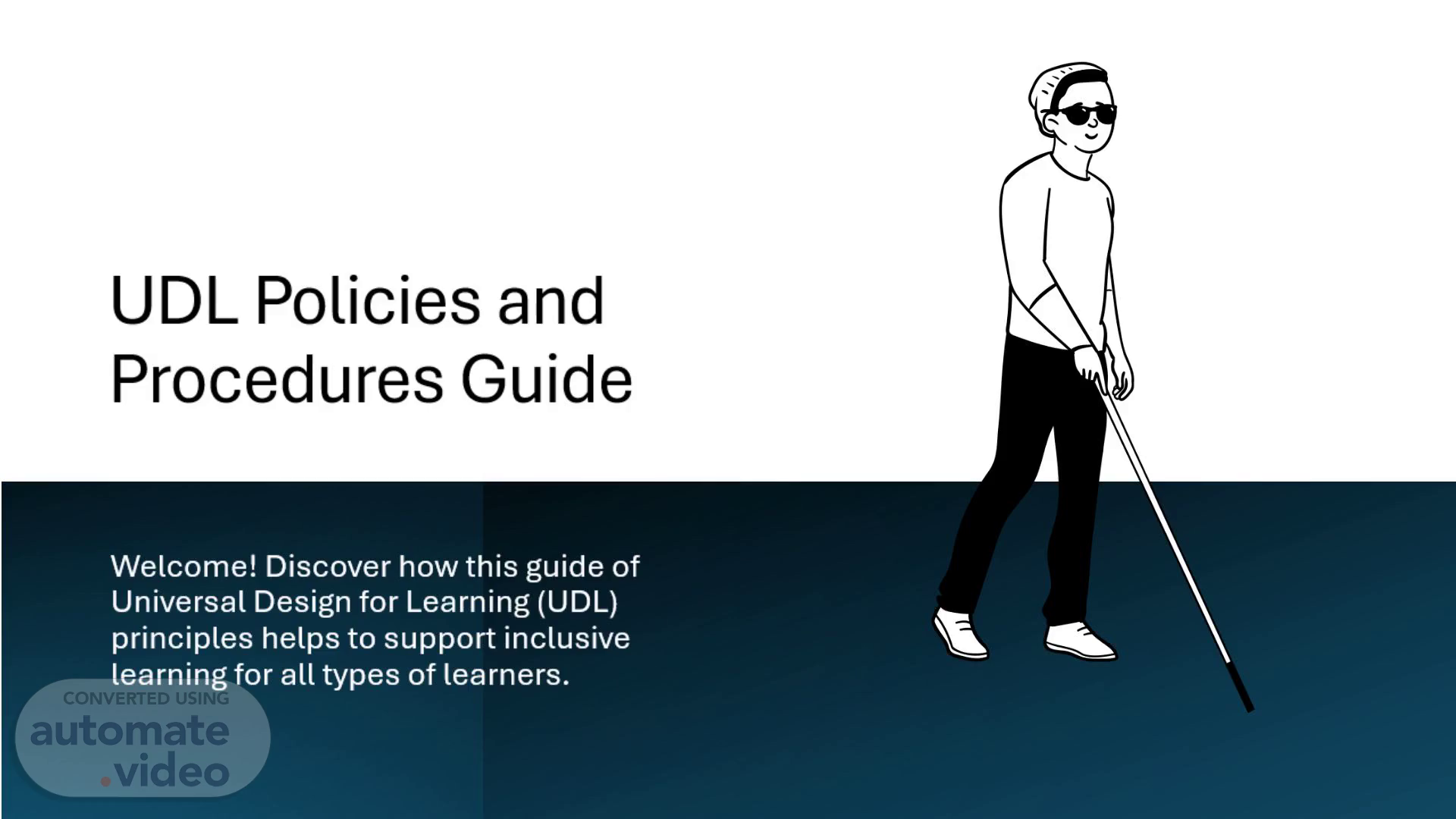Scene 1 (0s)
[Audio] UDL Policies and Procedures Guide Welcome! Discover how this guide of Universal Design for Learning (UDL) principles helps to support inclusive learning for all types of learners. This UDL Policies and Procedures Guide supports inclusivity for various types of learners. Assist students with understanding the purpose of every assignment, and they all combine to meet the overall learning objective. Instructors must offer at least two assignment formats per module (e.g., video reflection, discussion board post, written essay)..
Scene 2 (35s)
[Audio] Why Do Learners Need a UDL Guide? Why UDL? UDL principles ensure that every learner has a chance to succeed, regardless of their technical abilities or background. Incorporating UDL principles, helps to remove barriers to learning. UDL principles offer flexible ways to engage, present and express a student's knowledge on a given subject (CAST, 2024). Incorporate planning, organization, and goal setting in course design. Courses must include access to online tools such as assistive technologies and graphical enhancement programs for all diverse students and provide them with the opportunity to express their knowledge in their preferred format..
Scene 3 (1m 18s)
[Audio] Guide Accessibility Features Easy navigation, search features, adjustable text functionality, and text-to-speech features. The UDL Policies and Procedure Guide provides users with navigation tools to include; text-to-speech, font adjustments, and search features, ensuring accessibility for all users (Rose & Meyer, 2002). Apply the ADDIE instruction design model to course design - Analysis, Design, Development, Implementation, Evaluation (ADDIE, 2025). All course materials must meet Web Content Accessibility Guidelines 2.1 standards (Level Access, 2025)..
Scene 4 (2m 6s)
[Audio] Interactive Elements Explore flexibility – review multiple formats and track completion. Multiple media formats and presentation mode options, make this guide easily accessible to all users. Incorporate concept maps, charts, videos, animation, and infographics into instruction as much as possible to help facilitate learning. Courses must offer an auditory component to provide auditory learners with access to course information..
Scene 5 (2m 36s)
[Audio] UDL Application Take Action: Use this guide to create inclusive presentations for all students today! By applying these guides' strategies to design lesson plans, instructors can help to empower every learner. Be sure to incorporate Multiple Means of Engagement, Multiple Means of Representation and allow for Multiple Means of Action and Expression..
Scene 6 (3m 1s)
[Audio] Next Steps Review UDL Policies & Procedures Guide Plan and Design a UDL Lesson Collaborate with Colleagues Start by reviewing and using the UDL Guide today! Share your learnings on the Discussion Board Posts to inform and inspire other content creators..
Scene 7 (3m 20s)
[Audio] References ADDIE (2025). Addie model. Instructional Design Models. Retrieved from ADDIE Model - InstructionalDesign.org CAST. (2025). Universal design for learning guidelines version 2.2. Retrieved from https://udlguidelines.cast.org Level Access. (2025). WCAG 2.1: Understanding the success criteria. Retrieved from https://www.levelaccess.com/blog/wcag-2-1- exploring-new-success-criteria/ Rose, D. H., & Meyer, A. (2007, October). Teaching every student in the digital age: Universal design for learning. Educational Technology Research and Development 55(5):521-525. Retrieved from https://doi:10.1007/s11423-007-9056-3.
